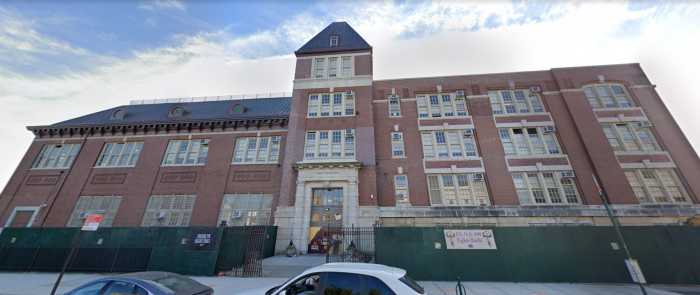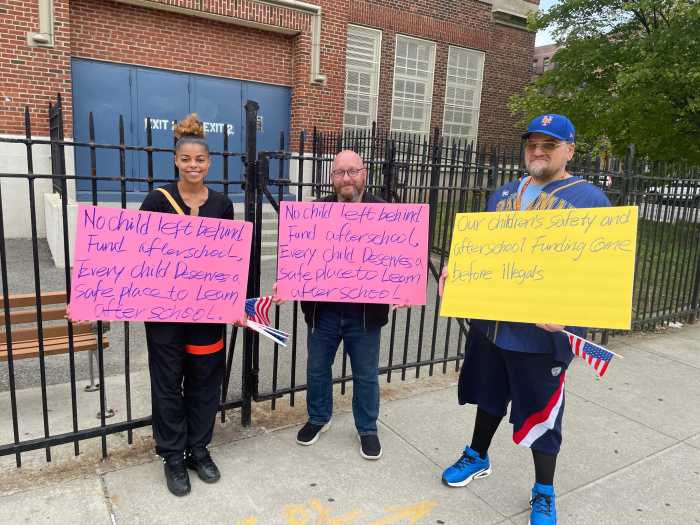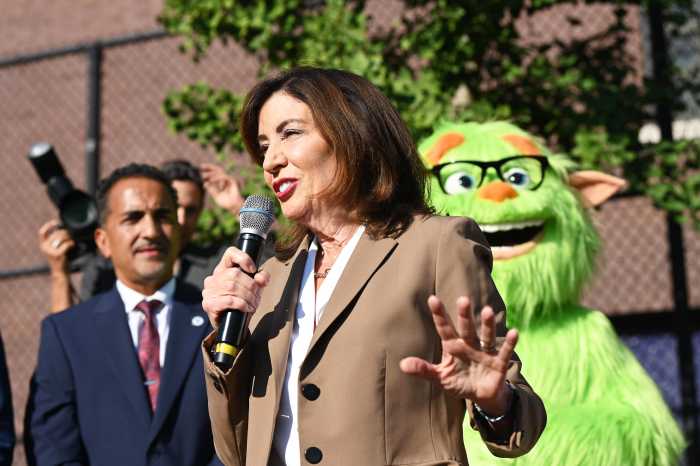A brand new faculty 12 months typically stirs up worries for Brooklyn mother and father. However simply earlier than public faculties reopened earlier this month, mother and father and schooling advocates had been already involved about learn how to fund after-school applications at a number of faculties throughout the borough.
After the state Workplace of Kids and Household Companies modified funding standards for after-school applications final 12 months, many Brooklyn faculties — particularly in southern neighborhoods — not certified for assist. That left mother and father and faculties scrambling to determine what to do with kids after dismissal with out paying hundreds for personal applications.
The identical downside has emerged once more this 12 months. A number of faculties didn’t obtain funding and are struggling to offer choices for fogeys who work full time. Metropolis cash is out there in some instances, and oldsters can apply for help to cowl after-school actions. On the federal stage, advocates are additionally watching the U.S. Senate, the place upcoming funds and legislative choices may have an effect on program funding.
For now, it’s clear the town and state are nonetheless adjusting to adjustments introduced by the creation of LEAPs, although some argue the changes fall brief. And for a lot of Brooklyn households, the funding combat seems removed from over.
Feeling the impacts
The department of OFCS that oversees after-school funding is the Studying Enrichment After-College Program Help initiative, often called LEAPs. This system funds actions throughout New York state, with high-need areas prioritized. In keeping with OCFS, New York Metropolis acquired 42% of the full funding; Brooklyn applications acquired 17 awards totaling $20.2 million.
Neighborhood-based organizations apply for grants via what OCFS describes as a extremely aggressive on-line course of. Candidates almost certainly to obtain funding should present they serve a high-needs district, with a minimum of half of scholars labeled as economically deprived. However even when faculties meet the standards, cash might not be out there. Packages are then positioned on a type of waitlist till extra funds are launched.
With out assist, households are left to cowl the associated fee themselves. That may imply as a lot as $3,500 per youngster for a college 12 months.
Jill Levinson’s daughter used to attend NIA Neighborhood Companies Community’s program at P.S. 185 in Bay Ridge. Now, she stated, it seems there shall be nothing.
Levinson famous that out of 581 college students final 12 months, 263 had been thought-about economically deprived — making $3,500 per youngster unattainable for a lot of households. Many mother and father can not depart work early or work at home, she stated.
Sarah Cooley, a mother or father at P.S. 104, additionally serves as the college’s Title I chair and a PTA member. She stated the PTA has been brainstorming methods to assist households afford after-school applications or discover secure choices for youngsters as soon as courses finish.
“There’s talk of communal babysitters where one person looks after four or five kids,” Cooley stated. “A tutoring center just closed, so there’s no real alternative. If families sign up early for NIA they get $200 less. But this is a big problem. The majority have both parents with jobs.”
NIA Neighborhood Companies Community gives after-school applications for Brooklyn college students at faculties together with P.S. 104 and P.S. 185, although funding gaps from LEAPs have left some applications in danger.File photograph
Neighborhood Training Council (CEC) 20 member Kelly Clancy has kids at Brooklyn College of Inquiry and P.S. 682 The Academy of Proficient Students, which shares NIA’s program. However with no funding, she stated she would want to pay $11,000 for all three of her kids to attend — or depart them house, as she did final 12 months.
Clancy explored the close by Jewish Neighborhood Heart, which gives faculty pickup, however stated its charges had been increased than $11,000. She additionally identified that with Brooklyn College of Inquiry being a Title I faculty, free applications needs to be out there.
“One of the things that I’ve made it sort of my priority to do is to try to understand why other schools have access to free NIA programs and ours are paid,” Clancy stated. “And I’ve never been able to get a satisfactory answer to that, especially because as of last year, we’re a Title I school, and we’re a NEST school. Like there’s lots of reasons why parents should have access to excellent, free after-school care for their kids, and we just don’t have access to it.”
John Ricottone, president of CEC 20, has once more been pushing for totally funded applications throughout the district whereas questioning why LEAPs doesn’t find the money for to satisfy demand.
“Times are hard,” he stated. “It’s concerning when you can’t even afford a certain food, and then you have to pay $3,000 for one child. And imagine two children, or three children … it’s just the thought process is very concerning that people can’t even afford meals. New York State should be supplying that, especially with summer and after-school programs. This is a necessity. It’s not something that we get to put on the back burner and say, Oh, they don’t need it. They need it.”
Getting proactive
Annette Velez, government director of NIA, stated two District 20 faculties that associate with the group — P.S. 104 and P.S. 185 — didn’t obtain funds final 12 months and had been once more omitted this 12 months. The faculties are on the “approved but not funded” record, and to date, Velez stated, she has not heard any updates.
Nonetheless, NIA is getting ready for future alternatives. Velez stated the Division of Youth and Neighborhood Growth will difficulty a request for proposals this fall for COMPASS after-school applications. COMPASS — brief for Complete After-College System of NYC — gives free actions for college students in grades Ok-12 throughout the town. As soon as functions open, she stated, NIA will apply for the 2026-27 faculty 12 months.
“This funding stream happens to be more generous than LEAPS funding,” she stated. “And offers opportunities for things like on-site services on some school holidays and the potential for summer programming. The vast majority of NIA’s programs are DYCD-funded, and we see this new [Request for Proposal] as a tremendous opportunity for reliable, long-term programming if awarded.”
 P.S. 104 in Brooklyn struggles with after-school funding gaps, leaving households to cowl prices or discover alternate options. Dad and mom and the PTA are advocating for extra assist as LEAPs funding continues to fall brief.Google Maps
P.S. 104 in Brooklyn struggles with after-school funding gaps, leaving households to cowl prices or discover alternate options. Dad and mom and the PTA are advocating for extra assist as LEAPs funding continues to fall brief.Google Maps
In District 21, CEC 21 President Jay Brown can be pushing to safe cash for a number of faculties, a few of which had been unfunded final 12 months. A handful acquired one-time assist from Gov. Kathy Hochul’s workplace, however that support has not been renewed. Brown stated district leaders are actually seeking to the town’s $331 million growth for Mayor Eric Adams’ “After-School for All” initiative, accepted in June as a part of the chief funds.
“We’re anticipating maybe three schools that were previously shut out will get funded through the new citywide funding expansion,” Brown stated. “So that’s what we’re expecting, but we haven’t gotten that officially announced. We’re expecting it soon, so we’re hopeful. And then we have another one or two schools that they’re trying to figure out how to maybe squeeze some money out of that to their community schools, so they’re trying to figure out how to get some funding from the city expansion for them.”
In July, Adams and DYCD Commissioner Keith Howard introduced that 40 after-school websites throughout the town will present free seats. In Brooklyn, that included 9 public faculties and one constitution faculty. Three are in District 21 — P.S. 101, P.S. 128 and P.S. 204 — whereas two are in District 20: P.S. 160 and P.S. 176. Though DYCD companions with the state, the LEAPs program is just not administered by DYCD.
In keeping with DYCD spokesman Mark Zustovich, 20,000 seats citywide had been chosen for the primary growth utilizing standards that may even information future websites.
“The absence of existing COMPASS elementary programs,” Zustovich stated, itemizing the standards in a press release. “Economic need, and service gaps in those communities. 5,000 seats will open [in September], with the next rounds scheduled for the 2026-2027 and 2027-2028 school years.”
The remaining 15,000 seats will come from COMPASS elementary applications.
Future funds on the sting
Though new funding streams are being pursued, many applications stay with out assist — and a few could quickly lose their typical sources. One instance is the federally funded twenty first Century Neighborhood Studying Heart program, which helps after-school and summer season actions.
In early July, President Trump froze 21CCLC funding, sparking nationwide outcry. A few weeks later, he reversed the choice.
However that doesn’t imply the issue is solved, stated Jenn O’Connor, a board member on the New York State Community for Youth Success. She is working to protect funding by emphasizing the significance of after-school applications to federal and state leaders.
She defined that Trump desires to get rid of 21CCLC and redirect its cash into a brand new block grant. If Congress leaves 21CCLC out of the fiscal 2026 funds, she stated, the impression would ripple all the way down to New York’s LEAPs program for the 2026-27 faculty 12 months.
“Congress will take up the Trump administration’s proposed budget in September and mark it up,” O’Connor stated. “The work that we’re doing now is to reach out to members of Congress and say, ‘Look, thank you for saving it. We hope you’ll save it again.’”
Afterschool Alliance, which advocates for inexpensive after-school entry nationwide, reported that as of July 31 the Senate Appropriations Committee was pushing again towards Trump’s proposal and aiming to maintain 21CCLC at $1.329 billion — the identical stage because the fiscal 2025 funds.
“We’re just doing the education now to say to folks, ‘Bullet dodged, but it’s coming up again,’” O’Connor stated. “Because if there are cuts to 21st Century or just the elimination of funds, those will impact the New York State LEAPs grantees. We are preparing for next year.”
 Brooklyn mother and father protest initially of the final faculty 12 months over gaps in after-school program funding, calling on metropolis and state officers to make sure secure, inexpensive choices for his or her kids.
Brooklyn mother and father protest initially of the final faculty 12 months over gaps in after-school program funding, calling on metropolis and state officers to make sure secure, inexpensive choices for his or her kids.
DYCD spokesman Zustovich stated the company carefully displays federal developments to evaluate how they might have an effect on younger New Yorkers. CEC 21’s Jay Brown can be monitoring the difficulty, as is Good Shepherd Companies, which runs free youth applications throughout the town, together with some in Brooklyn. Whereas most of its websites obtain 21CCLC funds after LEAPs, two of its neighborhood faculties rely immediately on 21CCLC.
“We will have to wait and see what the U.S. House of Reps decides to do,” Ochoa advised Brooklyn Paper, noting that Good Shepherd is a part of the New York State Community for Youth Success and has been strategizing with different 21CCLC recipients to make sure New York’s congressional delegation understands this system’s statewide impression.
Additionally protecting watch is Debra Sue Lorenzen, director of youth and schooling at St. Nicks Alliance. The North Brooklyn nonprofit runs applications at a number of faculties with funding from each 21CCLC and AmeriCorps. The latter helps almost 1,000 older college students with faculty and profession readiness, whereas 21CCLC helps serve about 600 deprived college students immediately and one other 4,000 not directly.
“Their full goal is to help make our world a little bit better, help make our societies function a little bit better,” Lorenzen stated of AmeriCorps. “And it’s a very, very modest amount of money, like a teeny amount of money that the federal government invests. But the return on investment is huge, and without that, we would not be able to provide those services, period, end of story. The funding doesn’t come from anywhere else.”
If 21CCLC is lower or eradicated, Lorenzen stated, St. Nicks Alliance would face workers and repair reductions, with ripple results on the broader neighborhood. The nonprofit is now concerned in advocacy via teams such because the Community for Youth Success and United Neighborhood Homes. Philanthropic donations aren’t a fallback, she stated, as a result of the neighborhood can not fill the hole if federal funding disappears.
“The federal government has seen fit to make investments in these things for decades,” Lorenzen stated. “Because they work, because the return on the investment of the public tax dollar is enormous, and that’s why they have been successful for so long.”
Reaching out to electeds
Some mother or father advocates have reached out to elected officers with combined outcomes.
Whereas some politicians have been unable to offer help, others have taken motion. One of many extra vital efforts got here within the type of a letter to Gov. Hochul, signed by Congress Member Nicole Malliotakis, State Sen. Stephen Chan, and Meeting Members Michael Tannousis and Alec Brook-Krasny. The letter urged the governor to revive funding for 4 D20 faculties, together with P.S. 104 and P.S. 185.
“The cumulative need across these schools totals approximately $800,000,” the letter reads. “This sum is well beyond what can realistically be raised through community fundraising. The afterschool programs at these schools, including those supported through the LEAPS initiative, are not supplementary services; they are essential and provide our students with safe environments, academic reinforcement, and cultural enrichment. Removing them disproportionately impacts working families, English language learners, and students from low-income households.”
OCFS Commissioner Damia Harris-Madden responded Monday, Sept. 8, noting that different funding sources exist past LEAPs, comparable to 21CCLC, COMPASS and DYCD applications. She additionally highlighted the state’s investments in every group and referenced the Baby Care Help Program, via which oldsters can apply for youngster care, together with after-school companies.
When Brooklyn Paper contacted the governor’s workplace concerning the letter, the inquiry was forwarded to OCFS’s press secretary, who offered remark however didn’t handle the letter immediately.
“LEAPS provides a safe and enriching environment for kids across the state of New York. We will continue to work with our state, city, and community partners to maximize afterschool access statewide,” the rep stated.
 Gov. Kathy Hochul speaks to folks and college students at M.S. 582 in Bushwick on the primary day of the 2025–26 faculty 12 months.File photograph by Lloyd Mitchell
Gov. Kathy Hochul speaks to folks and college students at M.S. 582 in Bushwick on the primary day of the 2025–26 faculty 12 months.File photograph by Lloyd Mitchell
Nonetheless, not everyone seems to be optimistic. Many faculties stay with out funding, forcing mother and father to cowl after-school prices themselves. Further free seats via COMPASS elementary applications is not going to be out there till the following faculty 12 months. PTAs are scrambling to boost cash or discover alternate options for households who can not afford to pay hundreds, whereas consideration additionally stays on U.S. Congress.
“That scares me the most,” stated Cooley. “Working in education or youth programs, any bill there is, they should be scared. Of course, we should be scared too.”
O’Connor stated she hopes Hochul will allocate extra funding for LEAPs within the state government funds. The time to behave, she stated, is now, as work on the following funds begins in January.
CEC20 lately posted details about the state’s Baby Care Help Program on its web site. However for faculties in D20 with out free after-school applications, CEC20 President Ricottone stated he’ll proceed to push for change.
“I’m not going to stop,” he stated. “It’s a need. It’s a need for our children and the families. So I’m not going to stop.”








